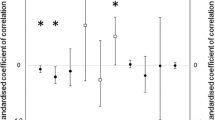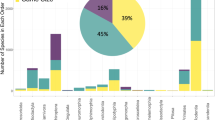Abstract
The aim of this study was to investigate reproductive strategies and their consequences in gray mouse lemurs (Microcebus murinus), small solitary nocturnal primates endemic to Madagascar. Previous reports of sexual dimorphism in favor of males and females, respectively, a high potential for sperm competition and pheromonal suppression of mating activity among captive males, led us to investigate mechanisms of intrasexual competition in a wild population. Based on 3 years of mark-recapture data, we demonstrate that sexual dimorphism in this species fluctuated annually as a result of independent changes in male and female body mass. Male body mass increased significantly prior to the short annual mating season. Because their testes increased by 100% in the same period and because their canines are not larger than those of females, we suggest that large male size may be advantageous in searching for estrous females and in enabling them to sustain periods of short-term torpor. In contrast to reports from captive colonies, we found no evidence for two morphologically distinct classes of males. Finally, we also show that most adult males are active throughout the cool dry season that precedes the mating season, whereas most adult females hibernate for several months. This is in contrast to other solitary hibernating mammals, where males typically emerge 1–2 weeks before females. Thus, this first extended field study of M.␣murinus clarified previous conflicting reports on sexual dimorphism and male reproductive strategies in this primitive primate by showing that their apparent deviation from predictions of sexual selection theory is brought about by specific environmental conditions which result in sex-specific life history tactics not previously described for mammals. A general conclusion is that sexual selection can operate more strongly on males without resulting in sexual dimorphism because of independent selection on the same traits in females.
Similar content being viewed by others
Author information
Authors and Affiliations
Additional information
Received: 6 July 1997 / Accepted after revision: 28 March 1998
Rights and permissions
About this article
Cite this article
Schmid, J., Kappeler, P. Fluctuating sexual dimorphism and differential hibernation by sex in a primate, the gray mouse lemur (Microcebus murinus). Behav Ecol Sociobiol 43, 125–132 (1998). https://doi.org/10.1007/s002650050474
Issue Date:
DOI: https://doi.org/10.1007/s002650050474




